
On August 12th NOVA Team Pilot Raul Moras from Italy flew a new record in the standard class. Launching at Sorica in Slovenia, Raul flew 267.8 km on his Mentor 3 with average speed of 29.18 km/h. Raul received some questions from his team mates and the paragliding community. Here is his information about Sorica as a flying site and his experiences during the record day. I would like to add that NOVA Juniors Team Pilot Gabriele Pittaro Truant did his first 200+ km flight on the same day and location on a FACTOR 2. Gago also took some of the photos you see here – thanks! (Till)
More information
Raul http://www.xcontest.org/world/de/fluge/details/:Asterion/12.8.2013/07:49
Gago http://www.xcontest.org/world/de/fluge/details/:Gago/12.8.2013/08:41
Flights with the highest scores ever in standard class:
SORICA INFO
This location offers the possibility to take off rather early compared to other sites nearby (keep in mind that it is almost facing flat land). In spring it can be as early as 9 to 9:30 am, in summer usually half an hour later.
Ideal weather conditions are easterly winds in the morning turning to south-west in the afternoon. The minimum cloud base should be around 2000 to 2100 meters. Then it is possible to fly 200 km out and return from May till mid or end of August.
The flight is rather easy for the first 100 km because it is 80 per cent is done on the ridge. Following the right “line” there is little need to “stop” to climb. The only and major disadvantage is that there are not always safe landings in case of low altitude… Going beyond the 200 km turn point it becomes more of an “alpine” flight. Several valleys have to be crossed.
Please note that the launch site is only used for long XC flights and not for normal flight. It is definitely not suitable for beginners.
THE RECORD FLIGHT
Past Monday all forecasts were predicting the perfect day for record flights: Strong thermal since the very morning and all day long, easterly wind in the morning (it turned out to be a bit strong) and west wind in the afternoon with a cloud base of 2300 meters (actually it was much more!) – and no thunderstorms. We hardly believed it could be true – but it was.
Arduino Persello and his wife Nicole Fedele had been in Sorica since a couple of days, trying to reach the 300 km out and return record. The both said that already the day before could have been “the day”…
On 12th of August we were twelve Italians and one Slovenian pilot at the take-off. Most of them were trying the first time 200 km out and return flight – and all of them succeeded! – and Arduino completed 311.96 km (BIG CONGRATULATIONS). I happily landed after 267.8 km.
I think we could have flown even further, as we could have taken off at least 20 minutes earlier than what we did. In addition I made a really big mistake in the very beginning of the flight: I missed a lift, was forced to go really low and far away from the main ridge. That cost me half an hour delay and missed the chance of 280 km record. Still my average speed was quite high (29.18 km/h).
HOW TURBULENT IS “TURBULENT”?
There is one aspect that really impressed me and I would like to bring it to your attention: After the flight we had big celebration dinner together. Obviously we were all euphoric from the nice flight and some consideration started about that day. We had some extra discussions about turbulences. Most pilots were saying it was really turbulent. However in my opinion it was NOT. Because of these extremely different opinions and to make the discussion more objective we made an “audit”.
Each pilot gave a rating to his individual “turbulence perception” from 1 to 10 (with 10 being very turbulent). Most pilots gave 7 to 8, two pilots rated 5 (one of these two was also flying a Mentor 3) and my rating was 3. Various pilots thought I was joking but I really wasn’t. During some specific moments my perception was 4 – but never more!
This really impressed me because most of the flight had been at full speed, so I was more “exposed” to turbulences. But during the entire flight I had only a two small collapses (both full speed and hands off brake!) and some wing tips closures. As a result am wondering whether I was underestimating the risk of the day… Or was it because of the MENTOR 3’s stability? Or maybe because of something else?
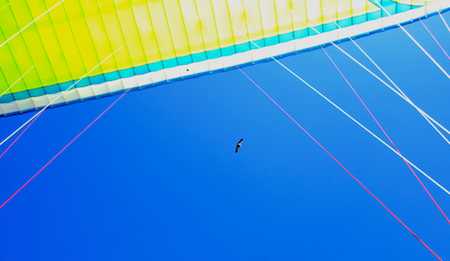
A Griffon thermalling with Raul’s MENTOR 3. Raul is wondering what makes his wing so unbelievably stable.
After discussing this aspect with the other pilots I came to the conclusion that the combination of MENTOR 3 (incredibly stable at full bar!) and the “board-free” harness I was using on that day makes the whole system even more stable. It seems to actually stop a lot of movements caused by turbulences.
It was not the first time I’ve heard other flying mates saying it was turbulence and I didn’t thought the same. Did anybody have similar experiences? I am also wondering whether this is good (= passive safety) or not (= feeling “too” safe”).
P.S.: Team Pilot Rinaldo Vuerich has sent us some photos from the same day. Gracie Rinaldo!

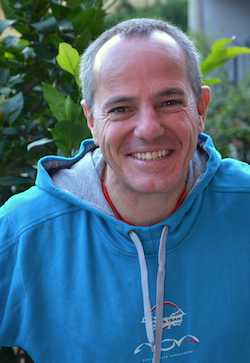
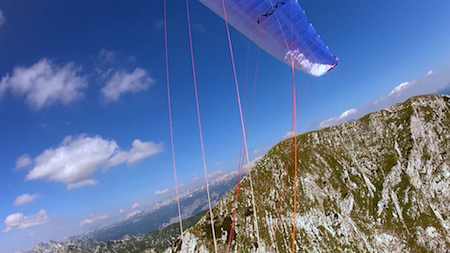
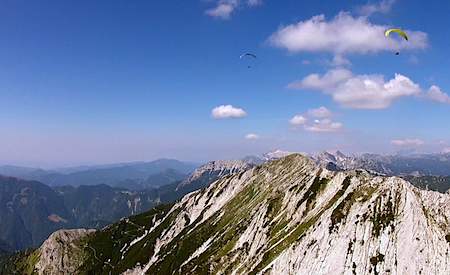
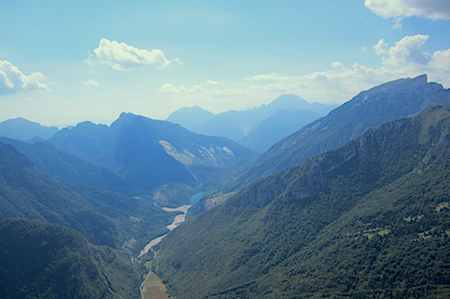
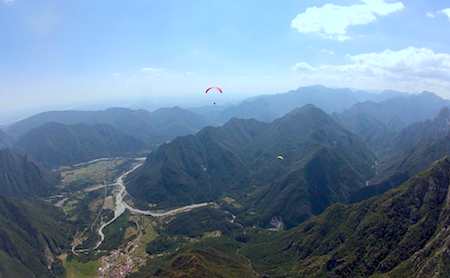
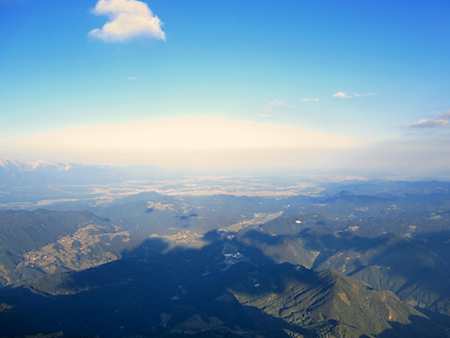
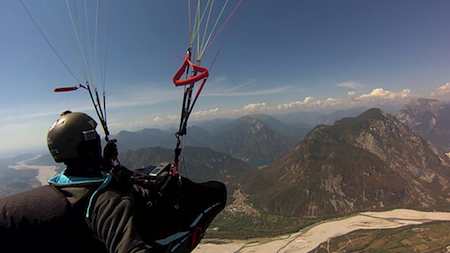
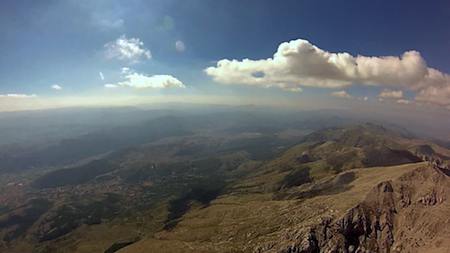
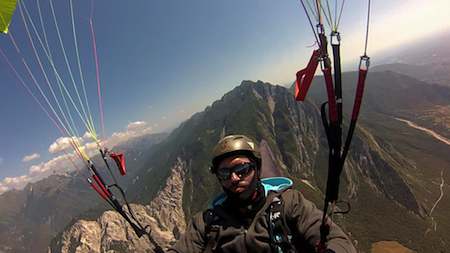
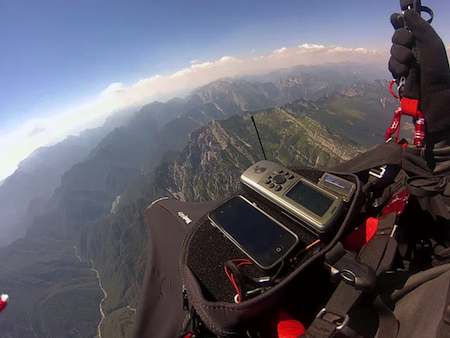
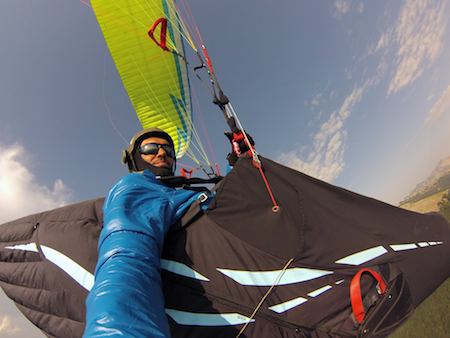
Marko Stamenovic
Aug 20, 2013 -
In recent years there is great effort to make gliders comfortable. After flying some new gliders, I am not sure if that is what I want anymore. Hard to explain but here we go. There is a very thin line between being comfortable and being cut off from what is going on in the air. At least I feel that way. For the last 3 years I flew Factor1, it moved in the air and it wasn’t like wooden plank, but it always told me in advance what is going to happen. I felt like one with the wing (lame thing to say, I know). That kind of feedback made me feel that I am perfectly informed and in full control. Also, it improved my active flying dramatically, and I will always claim that good active flying beats passive safety every single time. Now, I have new generation EN C wing, that glides and climb fantastically, but, compared to Factor1 I feel detached from the air and thermals. You raise your hands and it cuts perfectly through turbulence without moving a lot and without telling me a lot. And that scares the shit out of me. I started to feel more like passenger than a pilot. I learned to constantly control the wing and here I need to re-learn to let the wing do the job for me. Strange feeling. To be worse, noone understands why am I troubled with that. So, I am at the search for the same answer about what is really safe for me personally. Is the passive safety really safety, or will it make you less cautious pilot and make your reactions dull? Important question that I still don’t have answer to :(
Till Gottbrath
Aug 22, 2013 -
Hi Marko,
you comment is really interesting. Overall I think it is very much a matter of personal taste. Not everyboday likes the same wine, beer, foord best. Same with paragliders.
That’s why we think that doing test flights is so important before flying a wing. People should not only listen to what other pilots, magazines or even the Marketing folks from paragliders manufactureres say (like me, doinug PR at NOVA). Try it yourself!
Something else: Paragliding certifications mostly test what a wing does in case of “non-normal” situations. They do NOT really not test how likely a wing gets into trouble.
So I think that there are two categories of safety.
Knowing the extensive flight tests that the NOVA test pilots do in really turbulent conditions at Achensee, I think one of the strengths of NOVA wings is the suitability for “real life flying”. The wings are not only designed to pass the certification tests and have a good performance a 5 am with no wind at all. They do a good job in real life conditions.
Happy landings
Till
Marko Stamenovic
Aug 22, 2013 -
Hi Till, thank you for responding.
I agree that testing is the best thing to do, but sometimes it is not an option, especially in some smaller countries.
There were a lot of discussions on pgforum about what certification tests means. Honestly, I don’t even look at them. Some people count A’s and B’s when new glider comes out – I think it is pointless. Wings are put into boxes and that doesn’t necessarily reflect real life. Asymmetrics I done on SIV are quite different from those I got in turbulent air…
I am strongly considering going to EN B class since new gliders offer everything I need and I didn’t get as much airtime as I wanted this year.
Mentor 3 is high on my list, so it is interesting to read about it. Unfortunately that is all I can do, I didn’t get chance to try it. Factor1 was perfect wing for my taste – I have high trust in Nova’s concept. With Factor I could feel the air and could always initiate turn in turbulent conditions and for me, that is very important characteristic for the wing. If that philosophy is transferred on Mentor3 it would put smile on my face.
All the best,
Marko